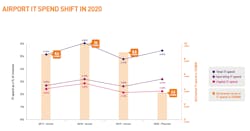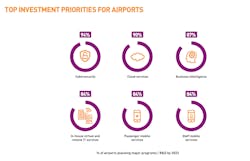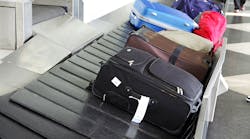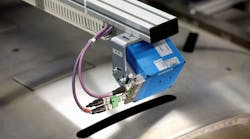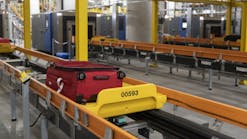Baggage Reconciliation Technology’s Role in Supporting Airport Recovery
It’s been more than one year since the COVID-19 pandemic changed the entire world. The air transport industry was among the most affected by the crisis, as airports and airlines across the globe halted operations for the sake of safety. Regional airports were arguably hit the hardest by this shift; as cash-strapped airlines scrambled to reduce costs, many had to cut out routes to smaller cities entirely.
Smaller airports lost revenue due to fewer airlines flying in and out of their locations. Luis Felipe de Oliveira, director general of ACI World, hit the nail on the head when he said, “the global transportation crisis has exacerbated the shortfall for smaller airports.” As travel slowly begins to return in 2021, these smaller airports and cities will be tasked with the unique challenge of getting airlines to return to their facilities.
In the same way regional airports were hit the hardest in the pandemic, it appears they may be a driving force behind this industry recovery. Domestic tourism is expected to return to pre-crisis levels one to two years earlier than international travel. The U.S. domestic market is one of the most resilient, and its ecosystem of small-hub, regional airports will enable that growth.
The question remains: how will small airports aid in this critical recovery? One way is by addressing core challenges with technological solutions that make it easier and more cost effective for airlines to fly in and out of those markets.
Key Challenges Facing Regional Airports
Regional airports have different pain points than their larger U.S. counterparts. In the context of pandemic recovery, many are evaluating new ways to retain and attract airlines and adapt to meet new passenger expectations yet are constrained by dwindling budgets.
Further, passengers expect the same kind of travel experience in a small airport that they would have in a large airport. Everything from passenger flows and efficiency, to convenience and personalization are expected in small and large airports alike. This brings certain challenges to light: how can a small airport meet these demands in a cost-effective way, while also thinking broadly about airline attraction?
Efficient Baggage Tracking for Every Airport
Effective baggage reconciliation technology goes a long way toward meeting passenger expectations and appealing to new airlines, regardless of airport size. Today’s passengers want information on baggage status and delivery, both reliably and in real-time. Technology that can provide the ability to track baggage just as a consumer would track an Amazon package makes traveling a more reassuring experience.
From an airline perspective, airports with automated baggage reconciliation systems in place can help reduce the cost of mishandled bags, which can cost an airline about $100 per bag to return to its owner. This can add up quickly, so airlines looking to reduce the cost of mishandled bags increasingly seek out airport partners that can support that goal technologically.
Airports with baggage reconciliation technology can also help airlines comply with IATA Resolution 753, which mandates airlines to track bags from initial check-in to arrival. One main gap for airlines is having this information from smaller airports while keeping their costs minimal, i.e. messaging and infrastructure). Industry solutions like SITA Bag Manager Lite can provide a cost-effective way for airlines, airports and ground handlers to reconcile, track and manage baggage – all in compliance with IATA’s requirements. In fact, SITA data shows that where bags are tracked at check-in and loading, mishandling rates for airlines were up to 60% lower.
Now is the Time to Invest in Technology
Investing in baggage reconciliation technology might seem strange during a pandemic – after all, passenger numbers drastically decreased over the past year. However, the severe slowdown in 2020 forced the air transport industry to focus on driving new cost efficiencies. Adding to the pressure, airlines and airports had to rapidly incorporate new health measures like touchless passenger processing and the handling of new health protocols. To solve new cost efficiency and safety challenges, the industry turned to technology, and in many cases, is reprioritizing where they invest.
Among the key findings from SITA’s recently published 2020 Air Transport IT Insights is an accelerated investment in automated passenger processing. Many airlines and airports were able to capitalize on existing trends toward touchless and mobile technology and have made significant strides in implementing new solutions that will help position them for impending recovery.
SITA data shows that 45% of baggage mishandling occurs at the transfer station, so having good data about inbound baggage from regional airports is key in reducing this problem Providing better visibility of where bags are in their journey helps to ensure that bags are then transferred to the proper outbound flight. But it’s not just multi-leg bags and passengers that benefit – point-to-point trips can as well. Working with a better data set means that several decision-making systems can also be automated. Re-flighting bags onto new flights when necessary and notifying passengers via self-service help to further reduce costs on arrival.
SITA’s report also highlights how airports and airlines are implementing a touchless at check-in process, including baggage services, a top priority. Extending automation to baggage reconciliation can reduce the number of mishandled bags and their associated costs by up to 20%. As the industry continues to recover, the focus will shift to ensuring the biggest return on digital investments, meaning now is the best time to invest in these core technologies.
Looking Ahead
Airports are where great journeys begin. While 2020 was incredibly difficult, it gave us the opportunity to look at new ways to drive improvement and efficiencies to the way airports operate. For regional airports specifically, implementing even the most basic baggage reconciliation system can support recovery by reducing handling errors, increasing operational efficiency, and improving passenger satisfaction. Baggage reconciliation technology is a piece of the essential technology strategy airports should implement as they aim to attract new airlines and meet passenger’s post-COVID expectations.
Peter Drummond joined SITA in 2003, starting in his initial role as systems engineer and rising to Development Manager for BagManager. He has led the delivery of multiple baggage solutions to customers globally – including Hong Kong, Dublin, London Gatwick and Singapore. More recently, Peter has managed the WorldTracer baggage tracing and repatriation service and he now leads the SITA Baggage Portfolio.

